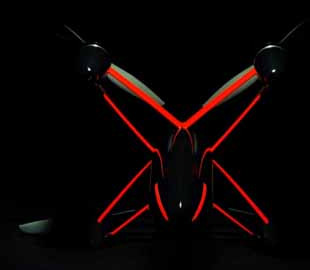
For anti-aircraft drones, the very important parameter is the speed in order to catch up with the target, but what values are possible to achieve and whether it will be enough
Source : Defence Express
Community “Wild Hornets” showed their next development, apparently an anti-aircraft drone, which are now actively used to destroy enemy reconnaissance UAVs. It is quite possible that this development is a further development of the work that was reported only a month ago, when the drone was accelerated to 260 km/h.
But now we are talking about a real jump in speed – 325 km/h, which was achieved by a drone of unknown design.
High-speed FPV drone from Wild Hornets accelerated to 325 km/h. We broke our previous speed record.
We continue to develop this project. A little more and the first batch of such drones will go to perform special and very important tasks.
You can support our developments by… pic.twitter.com/90aJcts7hm
— Wild Hornets (@wilendhornets) September 14, 2024
Note that the higher the speed, the more effective the anti-aircraft FPV drone is, because its operator has a very limited time to intercept his target, which still needs to be caught up to begin with. At the same time, the cruising speed of such a UAV as “Orlan-10” is about 110 km/h, and the maximum – 150 km/h.
200% Deposit Bonus up to €3,000 180% First Deposit Bonus up to $20,000At the same time, each system has its own maximum and quadcopters also have a “glass ceiling” its maximum speed. And for this, it is possible to track the current speed record for quadcopters. And as of September 2024, the most agile drone in the world – Peregreen 2, which reached a speed of 480.23 km/h. This record was set in April 2024 this year by Luke and Mike Bellamy (father and son) from the Republic of South Africa.
As you can see, aerodynamics are already very important at such speeds, so the drone resembles a rocket. At the same time, such a solution is not “know-how”, in particular, back in January 2023, the record of 414 km/h belonged to the XLR V3, which was created by Ryan Lademann. And enthusiasts started assembling the first drones according to this scheme 7-8 years ago, reaching a speed of 270 km/h.
However, record-setting drones differ from actual combat drones in that they do not carry a warhead. Also, combat drones need to develop high speed not for a few seconds, but to maintain it for a sufficient amount of time to intercept the target, that is, to carry a more powerful and therefore heavier battery.
But in the end, the already demonstrated capabilities of Ukrainian anti-aircraft drones are sufficient for effective use on the battlefield Moreover, some existing developments, such as the so-called “machine vision”, perfectly complement anti-aircraft drones in particular, because they remove the dependence of efficiency on the skill of the operator.

